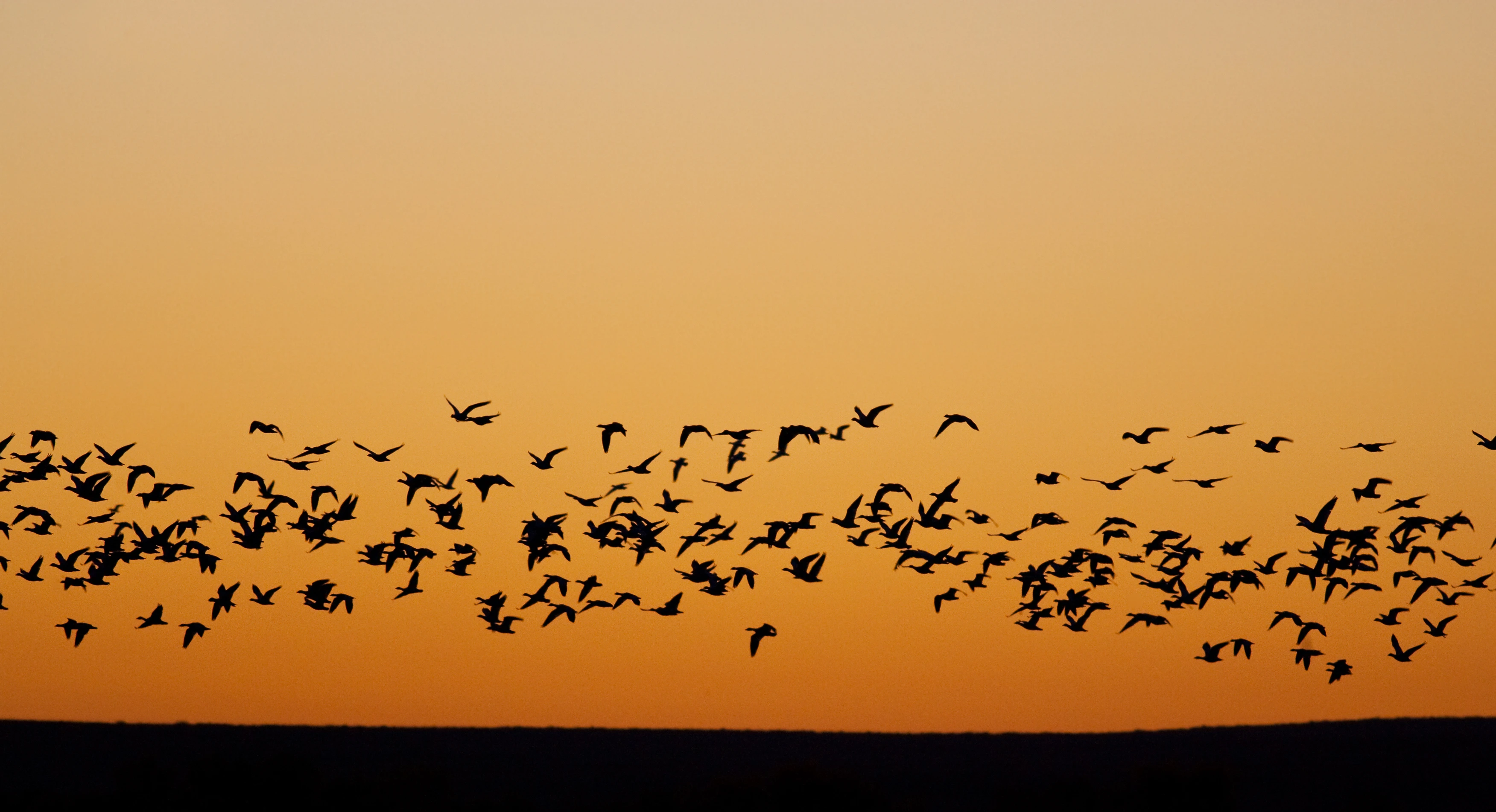Did you know? Despite its name, fall migration can occur as early as mid-June, with peak fall migration beginning in mid-August and ending around mid-October. In fact, thinking about migration as a constant process- rather than a semi-annual event- can help citizens recognize the ongoing threats that birds must navigate to survive.
Additionally, the fall migration season welcomes a host of new migrants from various bird species, including young birds that just hatched over the summer. These newborn chicks are now migrating for the first time in their lives!
With many fledglings making their first trip south for fall, we must do our part to keep birds safe all year long. You can help the birds stay safe by treating your windows with our commercial or residential products.
Migration Facts that Might Surprise You
As a concept, migration is easy to understand, as thousands of birds fly South when it gets cooler and return north when it gets warmer.
But, the truth is that migration is much more complex than we realize. So, we’re sharing a few fun facts about migratory birds that everyone should know:
- According to All About Birds, bird migration is partially influenced by a bird’s genetic make-up. Migratory behaviours are a product of years and years of evolution.
- Because fall migration is not motivated by a need to mate and nest, All About Birds notes that birds tend to kick-off fall migration in smaller bursts, which means we see species slowly make their way South.
- Did you know that male Rufous hummingbirds will migrate to Mexico as early as June? Interestingly, this species of male hummingbird does not rear its young. Female hummingbirds will also leave their fledglings about seven days after they’ve hatched to head south. Their new brood will make the migration flight on their own!
- And speaking of hummingbirds—during August, Audubon reports that as many as 14 species of hummingbirds will stop in Arizona on their way to Mexico. It’s one of the most diverse gatherings of hummingbirds in the United States.
- Based on data collected through eBird, studies have shown that smaller bird species will switch up their migratory routes from spring to fall. These routes are highly influenced by resource availability and weather patterns.
What You Can Do to Protect Migrants on Their Journey
Although the end of summer signals the flight of your favourite species, like the yellow warbler, Ruby-throated hummingbird, or the Baltimore Oriole, there’s a lot you can do to safeguard local and migrating birds throughout the year.
Residential clients will find a great bird-friendly solution with our Feather Friendly® DIY deterrent markers. The markers can be applied to windows, glass railings, and even basketball net backboards! The unique spacing is scientifically proven to protect against unnecessary bird fatalities, offering 8+ years of window collision prevention.
If you are looking for a larger scale solution with a lifespan of 15+ years, clients should check out our Feather Friendly® Commercial product. With over 5 million square feet of product installed worldwide, we are the trusted choice for preventing bird collisions on commercial buildings.
Share Your Action This August!
Feather Friendly® encourages our clients to share photos of their DIY installation or commercial project with us, and on social media, to help raise awareness about window collision prevention.









